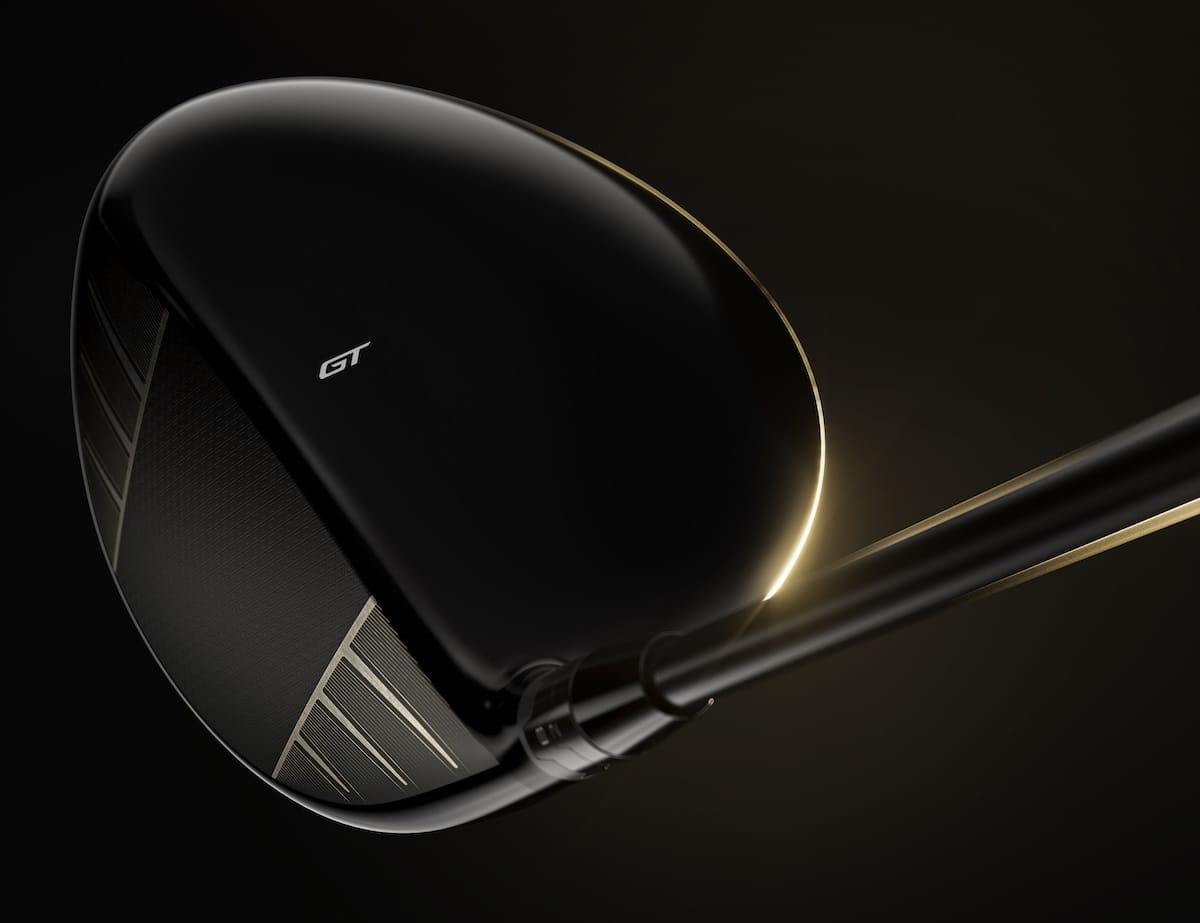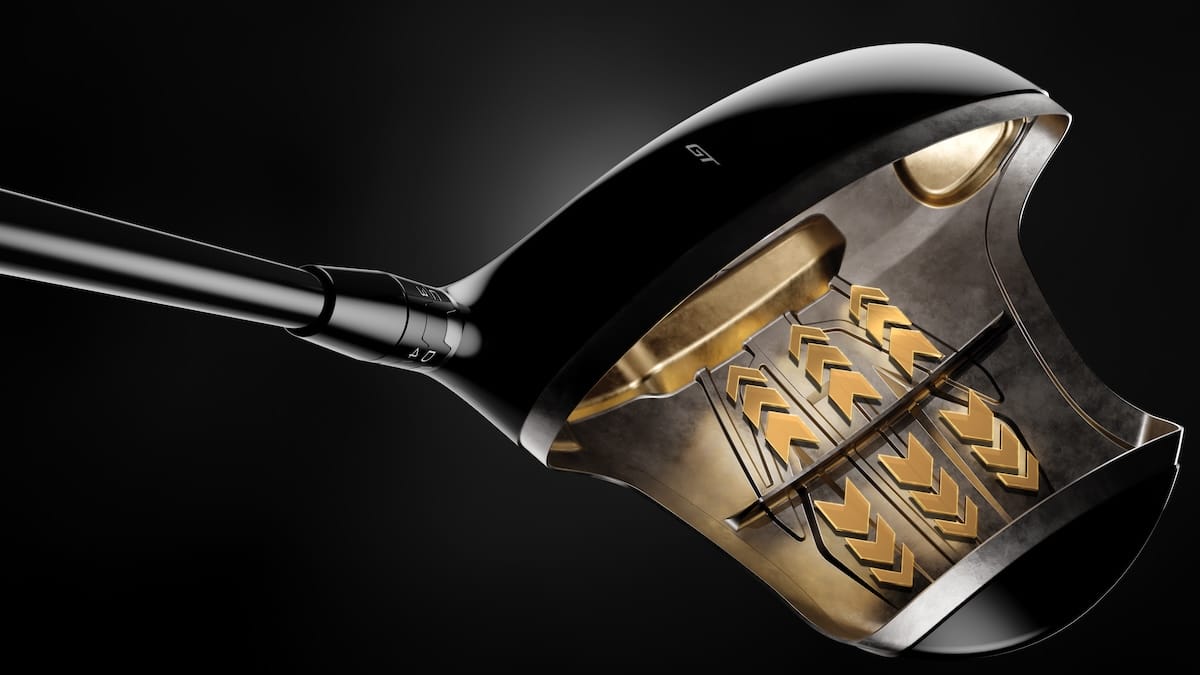Today Titleist have introduced three all-new GT driver models, the most advanced and best-performing drivers to ever bear the Titleist script. GT2, GT3 and GT4 drivers offer exceptional looks, feel and sound while getting faster, longer, straighter and more forgiving across the face than any Titleist driver to precede it.
The new GT driver line consists of three models. GT2 is designed for speed and forgiveness across the face with a higher-MOI setup. GT3 is designed for fine-tuned speed and control, maximising distance and optimising flight while GT4 is a low-spin, 430cc driver designed to eliminate excessive spin and deliver a fast, penetrating trajectory.
As always, Titleist focused heavily on Tour validation before launching to the public and GT drivers made their Tour debut in June at the Memorial Tournament, with 13 players immediately putting new GT driver models in play. A week later at the U.S. Open, 19 players had a GT driver in the bag – including the 2021 FedExCup (GT2) and 2013 Masters champions (GT2) – making the switch the week of a major. By the Genesis Scottish Open in July, more than 100 players had already played a GT driver on the PGA TOUR, including, Max Homa (GT3), Tom Kim (GT3), Cameron Young (GT2), Justin Thomas (GT2) and Will Zalatoris (GT2). Billy Horschel and the 2013 U.S. Open champion finished runner-up at the Open Championship both gaming GT3 drivers.
So what is different with GT you ask? Well as more and more equipment manufacturers added new materials like carbon to their drivers, Titleist continued making its drivers using titanium. Working with its manufacturing partners, Titleist made the titanium crowns, faces and body sections thinner, enhanced the aerodynamics of the heads, and developed different head styles so players and fitters could create a club that maximised overall performance. Attaining more ball speed was great, but designers did not want to sacrifice stability to get it, and their goal was not to increase forgiveness by giving up speed.
That overall brand value hasn’t changed with the new GT lineup but the decision to go with a new shape brought the need for use of a new material. To improve the aerodynamics of the GT drivers, Titleist engineers elevated the back portion of the sole to reduce drag and improve the way air flows over the club. However, using the new shape in an all-titanium club elevated the centre of gravity (CG) location, resulting in more spin, a lower launch angle and less distance.
To use the aerodynamic head shape but lower the CG location, engineers decided to use a thermoform polymer to design a crown piece that wraps over the heel and toe and into the sole. While many carbon fibre crowns require small ledges and glue on the top of the club to hold them in place, Titleist’s design positions the ledges low in the heel, toe and back of the head. In those areas, adding a small amount of extra weight does not reduce performance.
Look as closely as you want at the GT drivers, but you won’t see the seams where the thermoform polymer insert is joined to the titanium portion of the chassis. After the crown piece is added, Titleist fills the seams with resin, which is then hand-buffed to create a smooth surface before the heads are painted. In the address position, golfers see nothing but a glossy black crown and a small “GT” alignment logo. In addition to being light, Titleist’s new carbon material is impregnated with a polymer instead of resin glue which can be tuned to create specific sounds. That allowed Titleist to modify the sound of the GT drivers so they mimic what you hear with titanium drivers.
Much of the weight saved by using the thermoform polymer crown piece was redistributed to different areas within the heads. Each of the GT drivers has extra mass low and forward, which should increase ball speed, with the remaining mass going to the back.
Titleist then gave each GT driver a variable-thickness face that is thicker around the perimeter and very thin on the inside before getting thicker again in the middle. Titleist refers to this design as Speed Ring and it debuted in the TSR3 driver two years ago and Titleist claims it creates more speed over a larger area.
A closer look at each model
The GT2 is a 460cc driver that is the largest from front to back and has the most stability. It comes standard with a nine-gram weight in the back of the head to boost the moment of inertia (MOI) and make the head twist less on off-centre hits. The GT2 is available in 8-, 9-, 10-, and 11-degree lofts for both right and left-handed golfers. It comes standard at 45.5 inches in length and has Titleist’s 16-position SureFit adjustable hosel that lets players and fitters independently adjust the loft and lie angle.
The GT3 is also a 460cc head and comes in the same loft options for right and left-handed players, and it has the SureFit hosel system, too. However, the GT3 has a five-position weight track in the front of the sole that pushes the CG location more forward for increased ball speed. The moveable weight lets players and fitters create either a draw or fade bias. The weight, which comes standard at eight grams, is accessible by unscrewing a plate in the sole. Compared to the TSR3, the sliding weight is more forward in the head, so the GT3 should produce a slightly lower flight and less spin than the TSR3.
The GT4 is a 430cc driver designed to create the lowest spin and launch angle. It is available in 8-, 9-, and 10-degree heads, has the SureFit hosel and comes with an 11-gram sole weight in a rear port and a three-gram sole weight in the front port. According to Titleist, moving the 11-gram weight to the front in the GT4 makes the club produce less spin and a lower flight than a front-weighted TSR4, but keeping the 11-gram weight in the back keeps the CG location between the GT2 and GT3, so the spin and launch angle fit between the GT2 and GT3.
GT drivers are available for fittings from August 1st at select Titleist retailers and in all golf shops beginning August 23rd with an RRP of €699 / £579 or if you opt for one of their premium shaft options that will cost €899 / £749. Fore more information visit Titleist.ie

































Leave a comment